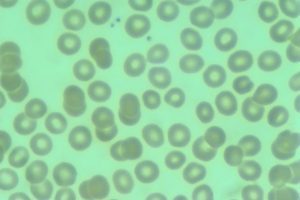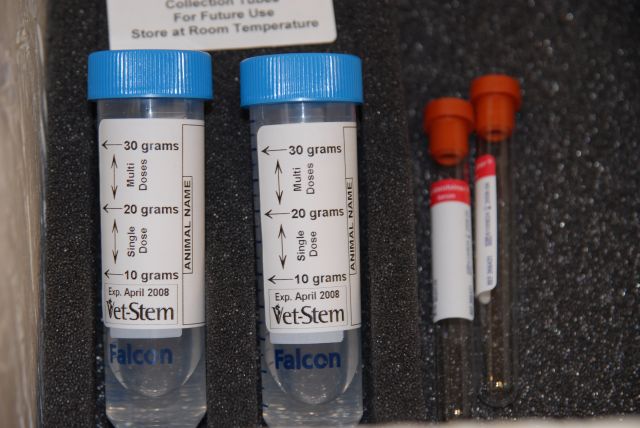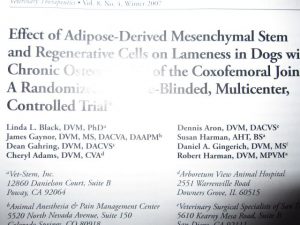Stem cells and regenerative medicine
What are stem cells?
Stem cells are undifferentiated cells that retain the ability to divide throughout life and give rise to cells that take the place of cells that die or are lost due to age or injury. These cells exist in the body to repair any damage that occurs, and remain undifferentiated so they can repair or replace any tissue. The same cell can become myocardium to repair the heart, nervous tissue, bone, ligament or tendon etc. What tissue the cell differentiates into depending on what type tissue is damaged and the matrix of hormones surrounding that tissue.

Do the Stem Cells come from Embryo’s?
NO!! The cells used are Adult Mesenchymal Stem Cells (MSC’s) form the patient’s own body. Because they are the patient’s own cells adverse reactions are extremely rare. MSC’s have most of the same properties and capabilities as embryonic stem cells (ESC), but do not have the potential to form teratoma’s or tumors that ESC can produce.
Where are stem cells located?
Adult Mesenchymal Stem cells (MSC’s) are found in many tissues in the body including blood, bone marrow and fat. Fatis a rich source of stem cells. In healthy animals1in 50 cells found in fat is a stem cell. From 30 gram’s of fat millions of stem cells can be extracted and concentrated for injection into injuries.
How are stem cells harvested?
Tissue is first collected via bone marrow extraction with a large needle, or fat is surgically harvested. Marrow cells have a lower cell count and are cultured for a few weeks to produce desired numbers for treatment. Fat is surgically removed, then put through a special process to remove the fat cells from the stem cells. The MSC’s can be concentrated and placed into syringes for injectio the same day, or within 2-3 days of harvest.
How are uncultured cells processed?
In-hospital kits and equipment are available to extract and process stem cells, and there are private companies and Universities who provide multi-step, sterile extraction procedures. Vet-Stem was the first company providing stem cell extraction, from fat, for veterinary patients in the US. Dr. Adams has used several methods and companies for stem cell extraction and injection and has found Vet-stem to have exceptional sterile procedures, reliable cell counts, and quick turn around. In addition to extracting stem cells Vet-Stem can also cryogenically store any unneeded cells for future use, and can culture additional cells if needed. Once processed the stem cells are counted and are placed into sterile syringes at the desired dosages and shipped within 48 hours back to the clinic for injection.
How are the cells injected?
Vet-stem provides sterile dosages in syringes with specific cell concentrations, typically 10 million cells per dose. One of the advantages when using Vet-stem is specific cell concentrations can be provided in dosages raging from 0.6 cc for joint injection (intra-articular or IA), or larger amounts up to 5.0 cc for intramuscular (IM) or Intravenous (IV) injections. IV injections require a special filter called a hemonate filter to remove any large unwanted particles or cells, which Vet-Stem provides for IV dosing.
What are stem cells used to treat?
Arthritis, fractures, ligament and tendon issues are the conditions most commonly treated with stem cells. The cells will help regenerate cartilage and joint fluid, repair small bone defects, promote new blood vessel growth, build muscle, bone, tendon or ligament, and remodel scar tissue. Stem cells have been used to treat immune mediated poly-arthritis, liver disease, IBD, spinal cord trauma, vascular injuries, wounds, immune mediated disease and renal disease. Studies are on going in the human and veterinary professions for these diseases and others.


What is Dr. Adams Background with Stem cell treatment?
 Vet-stem was the first company to offer stem cell treatment in horses and small animals. In 2005 after several years of providing treatment for horses they began offering small animal treatment, and Dr. Adams was one of the first 3 veterinarians to begin treating small dogs and cats with stemcells. She was involved in the first 3 canine arthritis studies, leading to two published studies. She developed protocols for use in poly-arthritis, and participated in a year- long studyon liver disease. In addition to formal studies she worked on multiple case studies, including degenerative myelopathy, spinal cord injuries, renal disease, atopy, FIV, Ligament repair, and IBS/IBD. She has been approved for compassionate care use for treatment of difficult or unusual cases, treated hundreds of patients with various illnesses and helped in development of other studies.
Vet-stem was the first company to offer stem cell treatment in horses and small animals. In 2005 after several years of providing treatment for horses they began offering small animal treatment, and Dr. Adams was one of the first 3 veterinarians to begin treating small dogs and cats with stemcells. She was involved in the first 3 canine arthritis studies, leading to two published studies. She developed protocols for use in poly-arthritis, and participated in a year- long studyon liver disease. In addition to formal studies she worked on multiple case studies, including degenerative myelopathy, spinal cord injuries, renal disease, atopy, FIV, Ligament repair, and IBS/IBD. She has been approved for compassionate care use for treatment of difficult or unusual cases, treated hundreds of patients with various illnesses and helped in development of other studies.
How successful is treatment with stem cells?
Most patients have very good response to treatment, but responses will vary depending on the severity of the condition being treated and whether other problems are present. Keys to successful treatment include having a diagnosis, localizing all problems and having a plan for routeand frequency of injections. In addition discussing expected outcome is very important. Stem cells can build new tissue but they will not resolve existing arthritis, remodel bone that is dysplastic, or correct a ruptured disc. More severe issues may require more the one injection, such as poly-arthritis. Proper patient selection is also important in obtaining good results. Stem cells can repair a meniscal tear or partial ACL tear, but if poor conformation caused the initial injury, the injury may reoccur after repair with stem cells, making that patient a poor candidate for treatment. A dog with severe hip issues is a good candidate, but a dog with spinal issues such as disc disease, who has their hips injected with stem cells may not see the same results as a dog with only hip arthritis.
What is the cost of treatment?
Cost will vary depending on how many areas, joints, musclesetc. are treated, number of injections needed and route of injections. Cost of treatment includes the surgery to collect fat, processing of the cells through Vet-Stem and sedation and injection of the cells post harvest. With intra-articular injections PRP or hyaluronic acid may also be injected with stem cells to enhance their effectiveness. Average costs vary between $3500- $4000 for initial fat harvest and injections. A complete estimate can be provided during and initial consultation.
How do I know if my pet is a good candidate for treatment?
An examination and consultation is the first step to determining if your pet would benefit from stem cell or PRP treatment. Any lab work form the last year and any previous x-rays relevant to the problem being discussed should be brought to the appointment or sent by your regular or referring veterinarian. Appointments generally run 1 hour and an estimate will be provided if your pet is a good candidate. Other options will be discussed if stem cell treatment is not the best or only option available for your pet. If you are interested in making an appointment to discuss treatment with PRP or stem cells for your pet call one of the hospital listed below.
Platelet-rich plasma
Here at Veterinary Sports Rehab, we are pleased to offer our patients PRP therapy to help them in their recovery. PRP therapy is short for Platelet Rich Plasma therapy. It also involves drawing blood from a patient, though this time, we want to isolate the platelets from the blood, making platelet-rich plasma. Once this blood is applied directly to an injury, it speeds up the healing process. It has been used successfully for skin, bone, and soft tissue injuries. It is also great to use for wounds that are having trouble healing.
PRP works by using a patient’s own blood so that there is less of a chance of a reaction. It also uses a sterile, closed system because the safety of our patients remains the most important.
We are so pleased to be able to offer PRP therapy to help our patients heal. If you have any questions about this procedure, feel free to contact the office at Denver – (303) 710-7689.
